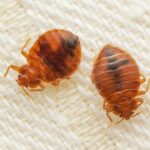Are Carpenter Ants Active During the Winter?
When it’s cold outside there are few things as tasty as a big steaming cup of frothy hot chocolate. On the flip side, there are few things as a nasty as reaching for that hot cocoa tin and finding a pile of wood shavings and dead insect carcasses. You might be looking at a Carpenter Ant garbage pile inside of your kitchen cupboard.
Wait, what’s a Carpenter Ant?
Carpenter ants are large. Some species can be as long an inch, which is as about as long as the tip of your index finger to the first joint. There are many different species of Carpenter Ant and they can be found nearly worldwide. They generally form nests in damp and rotting wood, but can easily tunnel into sound lumber. Unlike termites, Carpenter Ants do not consume wood, rather tunnel through in order to establish or expand a nesting site. Significant structural damage to homes and buildings can result from an infestation.
Normally insects either die or become inactive during the winter and the same goes for Carpenter Ants. When cold weather comes the hive slows down and the majority of the workers die off. Just enough ants remain to keep the hive alive until spring when full production begins again. At least that is what happens to colonies that live outside. No worries right?
Should you be worried?
Before you take that deep sigh of relief and go back to the cocoa, there is one big exception. If there is an infestation inside a home or a building, everything you just read is not the case. People like to keep their homes and offices warm and comfortable. The temperatures that we enjoy so much are the same temperatures at which Carpenter Ants are active and thriving, especially if the colony has grown to include interior walls.
Finding an infestation is not difficult. The first things to look for are wood shavings mixed with ant carcasses. Since they prefer rotten wood, the first places to look are eves, window sills, door casings and thresholds. Hollow doors make and excellent starting place as well, because the difficult work of tunneling has already been completed for them.
The second thing in determining if you have an infestation is to listen. With a trusty stethoscope in hand, target the areas where you found the debris piles. Run the base “bell” along the walls. As ants move within walls, brushing against the tunnel interiors, a soft rustling sound can be heard. That is the sound of structural damage.
Now what?
Anyone suffering from piles of sawdust and ant carcasses is going to want to know what to do about it. Eliminating areas of high moisture will go a long way toward controlling the infestation. There are a wide variety of chemicals that will kill the worker ants, but if the queen remains alive all those dead ants will soon be replaced. A certified pest control expert will know the best combination of chemicals to use in order to get the queen and keep your winter worry free.
If you have a carpenter ant infestation, don’t wait for cold temperatures to kill them off because your warm house prevents that from happening. Living pest free in your home is an attainable goal. Cozy up with that hot cocoa and let the professionals accomplish it for you.









